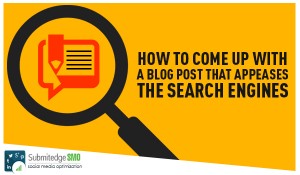
When potential clients contact us for help with a website, they always have one main question, “How much is this going to cost?” Website Design pricing is tricky. The cost varies wildly from individual to agency. You could be seeing numbers anywhere from a few hundred dollars to tens of thousands. So, how do you know what the right amount is to pay?
Your website is your business’s most important marketing asset and one of the biggest drivers of leads for your business. If your website doesn’t make a great first impression, you could potentially lose a prospect before your first personal interaction. Your website is important! It’s absolutely critical that a website is built correctly so that it can be source of leads for your business.
So, how much does it cost? Well, that’s a complicated question. Building a website is like building a house. There are a number of factors that need to be considered before you get that final estimate and then the actual finalized job cost.
5 Factors That Affect The Cost Of A Website Redesign
1. Skill
One of the biggest factors to a successful site design is the team or individual behind it. While you will pay more for experience, working with a proven web design team with in-depth knowledge and know-how will be key in the success of a project.
Remember, a website isn’t just about design. Building a website includes design, but also development, copywriting, SEO, strategy and quality control. Make sure the team you hire has experts that can handle all of those aspects and give each the proper attention they deserve.
In addition, make sure the team you hire understands your industry. Whenver possible, its best to find a team that specializes in your niche or has some background or experience that demonstrates they understand what makes for a successful website within your competitive landscape. Or, if they don’t specialize in your exact niche, what work have they done to prove their successes?
Hiring a team is an investment far exceeding that of an individual, but you will get the expertise and attention of three to ten professionals as opposed to a single jack of all trades.
2. Process
Having the right team in place is all for show unless they have a tried and true process guiding them. You can’t build a successful website on a couple of calls, two weeks of work and then a scheduled launch date. If you have been promised this dream scenario, consider it to be a red flag.
The best web design agencies have well thought out processes that incorporate goal setting, persona creation, keyword research, competitive analysis, wireframes, sitemaps, user testing, quality control and more. In a defined process, the client is a part of almost every single stage, allowing you to stay abreast of changes and ensuring your project progresses according to schedule.
Following a traditional web design process takes time (we estimate a minimum of three months). If you are looking for a speedier approach, you may want to consider Growth Driven Design, a new web design approach focused on getting a launchpad site up, making it work for your basic needs, and then making adjustments as you go.
Regardless of which approach you take, a well thought out and thorough process, like a solid team, will increase the overall cost of your project.
3. Functionality and Integrations
In my experience, most companies that undertake a website redesign want their new site to “do something” special or more than what it currently does. Whether it be advanced forms, user registration, live chat or an event calendar, creating non-standard or custom features takes time. And each of these “extras” has to be added into the cost. If you are thinking about a site redesign, start thinking about the functionality you want included now. By keeping a running list, you will be able to provide your web team with your “must haves” from the beginning and you’ll receive a more accurate quote for it.
Don’t forget about integrations. If you know your site needs to be integrated with a CRM, eCommerce or another third party platform, add it to the aforementioned list.
4. Content
This is the biggie. You could have the most beautiful website in the world, but if the words and images on the pages aren’t good, it’s not going to help you grow your business. We have written previously about how content can make or break a site. Be prepared that when you redesign your website, you’ll need to rewrite or create new content and have a plan in place. If you lack a plan, or if the plan is to figure it out during the redesign, expect to pay for it. Content creation is by far the most time consuming part of any website project. We aren’t just talking copy – photographs and videos should be included in website content as well.
Copywriting is not easy. In addition to ensuring your copy is spelled correctly and doesn’t have grammatical errors, you need to consider user experience (UE) and search engine optimization (SEO). These are fairly complicated fields that require a high degree of specialization to get right, so if your web design agency doesn’t have SEO and UE experts, consider finding a different provider.
Stock photography is another biggie we have mentioned in the past. Make sure original photography has been added where it is most necessary and that any stock photography you do add to your site is applicable to your copy. Poor use of stock photography can harm your brand’s image.
If you aren’t planning to pay for copywriting, make sure you are budgeting for this in other areas. Is your in-house team going to be creating the content? Make sure they are able to invest the necessary amount of time to churn out the best content possible. Once you have drafts of your new copy, you may still want to budget in the necessary hours for your web design team to review the copy you have created and ensure that it is optimized for search engines, etc.
5. Demand
The taboo factor that none of us like to talk about is client demand. Clients who respect the web design process are a dream come true. When you have the right team in place (see factor number one), you shouldn’t feel the need to micromanage your website redesign. Experienced designers will check in with their clients on a regular to ensure they are part of the process.
But please, if you decide to hire a great team with a proven track record, let them do their thing. When clients start to email and call an outrageous number of times a day, more hours are billed, productivity halts and morale is immediately depleted. Trust your decision making and trust your team.
6. Maintenance
Once a website is built, you must continue to nurture it. The worst thing you can do for your web presence is leave a perfectly built website in a mummified state for two years until you decide to go through the process again. Now, I am not saying that you need to find items to tweak, but you should be making constant improvements such as updating your CMS, making copy or photography changes, and adding or updating video.
Most agencies will offer a website maintenance package after a site launch. Yes, it will come as an additional cost and no, you should not immediately opt out. Read through the website maintenance contract and understand what it is you are getting for the additional fee. If these updates are not something you will be able to handle yourself, it is absolutely worth taking on this cost. A well maintained website is less likely to crash, less likely to fall in the search engine rankings and less likely to stress you out in the middle of the night.
7. Other Fees
Domain registration and hosting will always be a cost outside of the design fee. Why? No one should ever own your website but you. These are the keys to the kingdom! Your website domain and hosting are like the deed to a house – you want to make sure this information is accessible and secure.
If your designer/developer is recommending that hosting should be wrapped up in the overall pricing structure, understand why. Robust platforms like the HubSpot COS will require you to host on their servers to take full advantage of the rich features the service provides, but you should own your account. With a CMS platform like WordPress, you should have the ability to choose from a wide variety of hosting providers and if the one you pick proves to be unsatisfactory, you should have the option to jump ship.
When it comes to hosting, prices vary widely. There are many very inexpensive options like GoDaddy, Network Solutions, and Dreamhost. If you elect one of these and go with a basic package, expect slower site load times. If you want to spend a little more for a faster loading site, upgrade your hosting package or move to a host like WPEngine or HubSpot.
Understand your rights as a website owner. It sounds silly, but when it comes down to that critical moment, you will be relieved you have an understanding of the way things work.
So how much does it cost?
After all that, this is still a weighty question. Quintain Marketing is an agency with a proven track record and a lengthy and in-depth process. We put a lot of time and energy into each and every site we build. Our goal is to set you up for inbound success. Given all of the factors above, our website pricing starts at $ 12,000 (for a basic small business website) and goes up to $ 20,000 – $ 30,000 for a more complex site that incorporates e-commerce or customizations.
Each website is different, so the only way to be sure what a website will cost is to contact an agency after considering the 5 key factors above. Make sure you present your goals, functionality needs, current content landscape and an idea of what it would be like to work with you. You’ll know you’re on the right track if they ask lots of questions before providing you with a quote or proposal.
Are you curious about specifics? Or maybe you have something to add? Feel free to reach out in the comments.
(266)
Report Post







